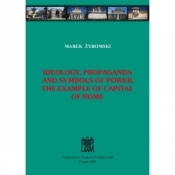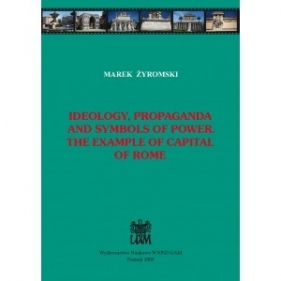18.17
Książki
Wydawnictwo Naukowe UAM
Ideology, propaganda and symbols of power. The example of capital of Rome
Wydawnictwo:
Wydawnictwo Naukowe UAM
Oprawa: miękka
18,17 zł
Cena rekomendowana: 25,90 zł

Cena okładkowa/rekomendowana przez wydawcę/producenta.
Produkt chwilowo niedostępny
Powiadom o dostępności
Opis
(...) This book presents the question of continuity and change of symbols of power on the example of the capital of Rome. Rome functions as the state’s capital for over two thousands years (without any significant interruption) ? and so, longer than any town in Europe. Starting with the ancient Roman Empire (taking the year of 754/753 B.C. as the traditional date of the foundation of Rome) up to the transfer of capital of Imperium Romanum to Constantinople in 330 A.D. Nevertheless, after the division of Roman Empire into two parts after the death of Theodosius the Great (in 395 A.D.) Rome became the capital of Western part ? the separate state. Together with rise of Christianity (and with its recognition as a state religion by Constantine) Rome became the seat of a bishop of Rome (later on known as the pope). After the collapse of the Western Roman Empire (in 476) it was the Christianity and papal Rome which enabled the continuity of both the position of Rome and the continuity of ancient culture and civilization. During the Medieval times Rome strengthened its position not only as the capital of papal state but first of all as the capital of the Western Christianity.
Opis stanowi fragment Wstępu
Opis stanowi fragment Wstępu
Szczegóły
Tytuł
Ideology, propaganda and symbols of power. The example of capital of Rome
Autor
Marek Żyromski
Wydawnictwo
Rok wydania
2020
Oprawa
miękka
Ilość stron
252
Format
1480x2120
ISBN
978-83-60677-72-8
Rodzaj
Książka
Stan
Nowy
EAN
9788360677728
Kraj produkcji
PL
Producent
Wydawnictwo Naukowe UAM

Dodałeś produkt do koszyka

Ideology, propaganda and symbols of power. The example of capital of Rome
18,17 zł

Recenzje